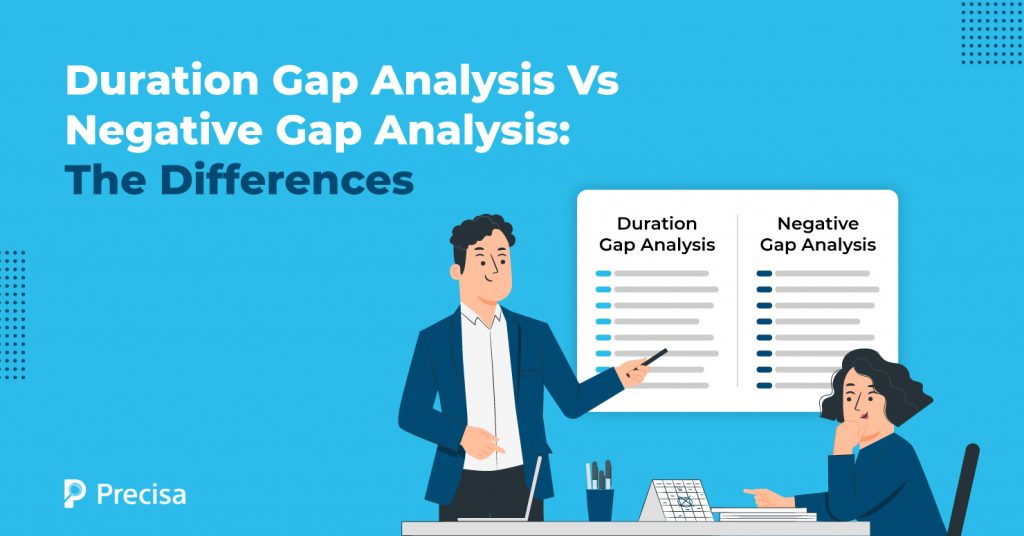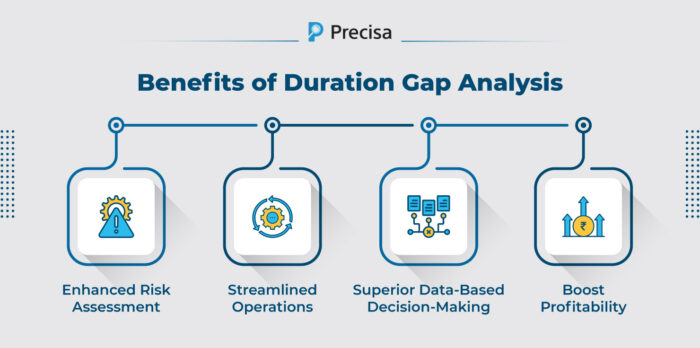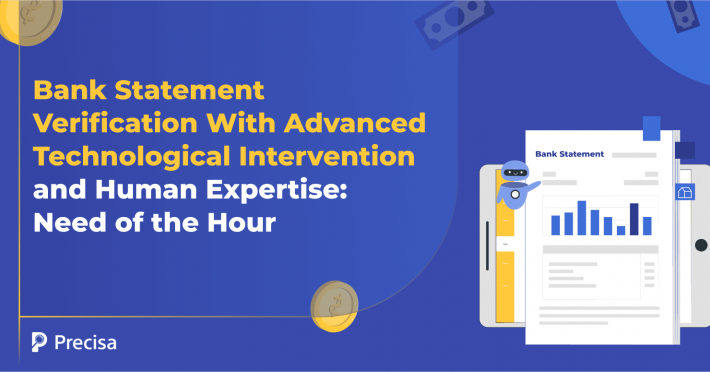Duration Gap Analysis Vs Negative Gap Analysis: The Differences

As the lending industry attempts to fill in the gaps and scale at a faster pace, there is a proportionate increase in risks. Unpaid loans, regulatory risks, market risks, and operational risks are all potential reasons for businesses to run on losses and potentially go bankrupt.
To build more resilience into their balance sheets, lenders must be able to predict potential risks and be in a position to act based on outcomes.
One such best practice is regularly running duration gap analysis tests, which assess cash inflows and outflows from assets and liabilities. This process differs slightly from negative gap analysis, though they are similar.
In this blog, we explain the differences between these two processes and delve into the benefits of duration gap analysis, which helps lenders stay agile and competitive in all market scenarios.
What Is a Duration Gap Analysis?
Duration gap analysis is a financial and accounting technique leveraged by financial institutions to evaluate their exposure to risks arising when interest rates change.
Financial institutions such as banks, pension funds, investment firms, and lending businesses use this method to safeguard their business and be sustainable in various scenarios due to interest rate shifts.
Duration refers to the duration of the respective institution’s portfolio of securities. The figure is calculated as an average of the weighted durations of individual securities (both assets and liabilities).
Banks, for instance, can use the duration gap formula to compare how various interest rates can impact the value of assets and liabilities and, in turn, the organisation’s Net Interest Income (NII).
They can work with a series of permutations and combinations and predict multiple scenarios. Based on potential outcomes, banks can be prepared with relevant measures to respond to evolving interest rate changes and their impact on the business cash flows.
To illustrate, they can consider implementing hedging techniques and adopting interest rate swaps.
What Is a Negative Gap Analysis?
Financial institutions such as banks and Non-Banking Financial companies (NBFCs) leverage gap analysis to identify the risks associated with interest rates as they change.
The gap is calculated as the difference between the value of rate-sensitive assets (RSA) and rate-sensitive liabilities (RSL), as follows. Loans are examples of RSAs, while short-term deposits held by banks/ NBFCs for their customers are examples of an RSL.
When the calculated gap value is negative, the value of the RSLs is more than the RSAs. A negative gap analysis is a process by which the negative gap is calculated and analysed.
Duration Gap Analysis Vs Negative Gap Analysis
Though both processes enable financial institutions such as digital lenders to assess risk associated with changing interest rates, some key differences exist.
1. Purpose
The duration gap analysis is a process used to predict how changes in the interest rate will impact a financial institution’s NII and, in turn, the business’s financial health in various scenarios. On the other hand, negative gap analysis offers an instant measure of the business’s current health.
2. Calculations
The formulae used by businesses to arrive at duration gap analysis and negative gap analysis are very different.
3. Context
Duration gap analysis is used by financial institutions to analyse their financial positions in the context of changing interest rates.
However, businesses can also apply this process to potential borrowers seeking loans; it paints a more comprehensive picture of their creditworthiness.
On the other hand, negative gaps are only relevant to businesses with a portfolio comprising both RSLs and RSAs. Usually, these businesses deal with financial services.
Benefits of Duration Gap Analysis

Enhancing the analysis capabilities can empower lenders in several ways.
1. Enhanced Risk Assessment
Lenders need to assess the level of risk as they scale continuously. For instance, if the rate of loan repayment slows down while the number of sanctioned loans increases, this scenario can lead to an imbalance in cash flows.
If the interest rates shift, the situation can be further jeopardised. Regular duration gap analysis can help lenders keep a tight check on their cash flows and overall fiscal health.
2. Streamlined Operations
Based on the findings, lenders will be in a superior position to reduce costs and run operations more efficiently within allocated budgets.
Lenders can scale up and down as per the anticipated needs of the business. They can take adequate measures to safeguard the financial state of the business during challenging times.
3. Superior Data-Based Decision-Making
By leveraging cloud-based bank statement analysis software, lending businesses can make duration gap analysis more efficient, comprehensive, and data-driven.
Such solutions come with superior AI-based analytics engines, which offer business forecasts for the future. Thus, all decisions are based on data and in-depth predictive analysis.
4. Boost Profitability
Lenders are always at the risk of running into losses, due to the growth of non-performing assets, fraudulent players, and other factors, often outside their control.
However, by running regular financial checks through techniques like duration gap analysis, they can reduce risks and boost chances for profitability.
Key Takeaway
Lending businesses need to continually keep a check on how their financial position will be impacted by changes in interest rates. Leveraging duration gap analysis is an important practice to facilitate such checks.
However, manual interventions can be challenging, especially as the businesses scale. Leveraging cloud-based AI-powered financial analysis software can help businesses expedite the process and make it accurate.
They can repeat it any number of times, and often within minutes.
Access to such technology can help lenders strengthen their financial position, predict financial risks, and make data-driven decisions at all times.
Presica’s comprehensive and seamless financial data analysis solution simplifies and speeds up the process through automation. The software provides actionable insights on a customisable dashboard, thus helping companies make informed business decisions.
Request a free demo today!



